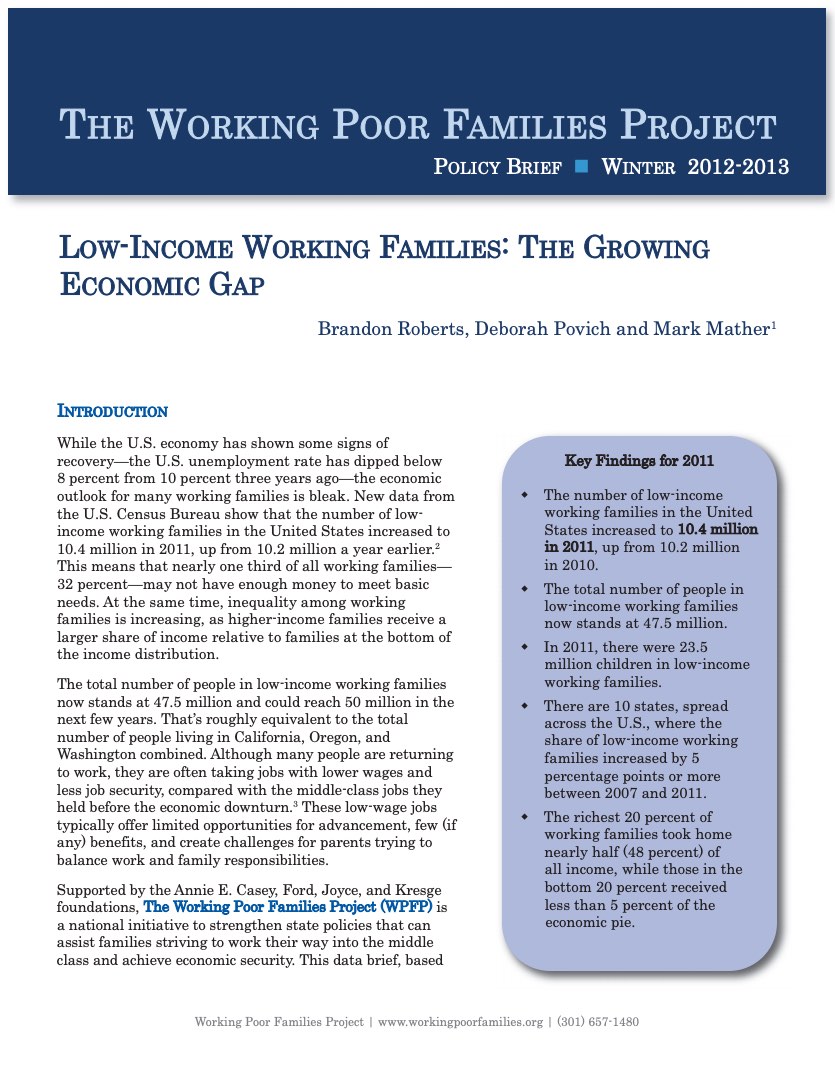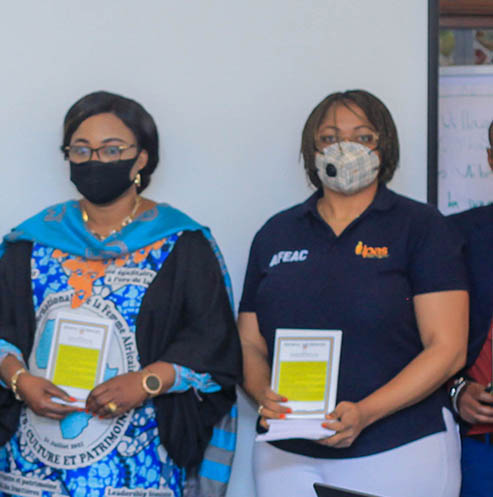Project: Working Poor Families Project
U.S. Low-Income Working Families Increasing
(2013) Economic security is out of reach for a growing number of working families in the United States, according to a new analysis of 2011 data from the U.S. Census Bureau's American Community Survey. The number of low-income working families rose from 10.2 million in 2010 to 10.4 million in 2011, representing nearly one-third of all working families.





